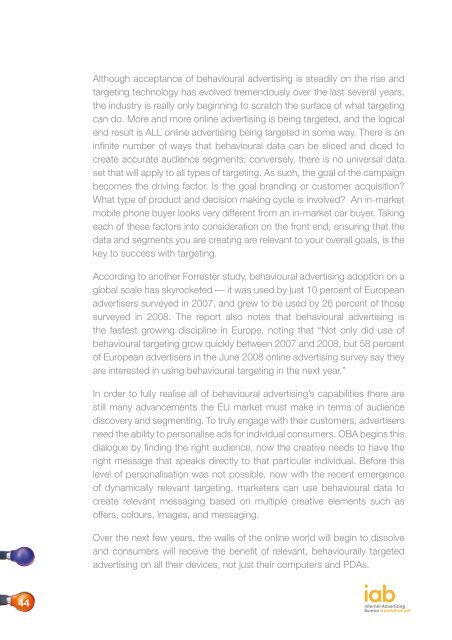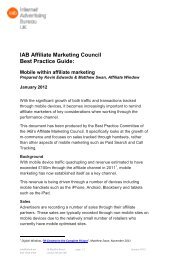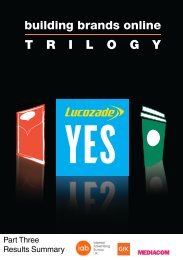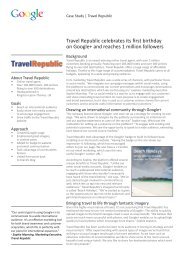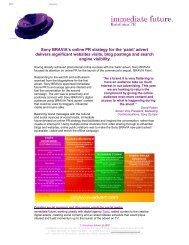Download publication - IAB UK
Download publication - IAB UK
Download publication - IAB UK
You also want an ePaper? Increase the reach of your titles
YUMPU automatically turns print PDFs into web optimized ePapers that Google loves.
Although acceptance of behavioural advertising is steadily on the rise and<br />
targeting technology has evolved tremendously over the last several years,<br />
the industry is really only beginning to scratch the surface of what targeting<br />
can do. More and more online advertising is being targeted, and the logical<br />
end result is ALL online advertising being targeted in some way. There is an<br />
infinite number of ways that behavioural data can be sliced and diced to<br />
create accurate audience segments; conversely, there is no universal data<br />
set that will apply to all types of targeting. As such, the goal of the campaign<br />
becomes the driving factor. Is the goal branding or customer acquisition?<br />
What type of product and decision making cycle is involved? An in-market<br />
mobile phone buyer looks very different from an in-market car buyer. Taking<br />
each of these factors into consideration on the front end, ensuring that the<br />
data and segments you are creating are relevant to your overall goals, is the<br />
key to success with targeting.<br />
According to another Forrester study, behavioural advertising adoption on a<br />
global scale has skyrocketed — it was used by just 10 percent of European<br />
advertisers surveyed in 2007, and grew to be used by 26 percent of those<br />
surveyed in 2008. The report also notes that behavioural advertising is<br />
the fastest growing discipline in Europe, noting that “Not only did use of<br />
behavioural targeting grow quickly between 2007 and 2008, but 58 percent<br />
of European advertisers in the June 2008 online advertising survey say they<br />
are interested in using behavioural targeting in the next year.”<br />
In order to fully realise all of behavioural advertising’s capabilities there are<br />
still many advancements the EU market must make in terms of audience<br />
discovery and segmenting. To truly engage with their customers, advertisers<br />
need the ability to personalise ads for individual consumers. OBA begins this<br />
dialogue by finding the right audience, now the creative needs to have the<br />
right message that speaks directly to that particular individual. Before this<br />
level of personalisation was not possible, now with the recent emergence<br />
of dynamically relevant targeting, marketers can use behavioural data to<br />
create relevant messaging based on multiple creative elements such as<br />
offers, colours, images, and messaging.<br />
Over the next few years, the walls of the online world will begin to dissolve<br />
and consumers will receive the benefit of relevant, behaviourally targeted<br />
advertising on all their devices, not just their computers and PDAs.<br />
44


